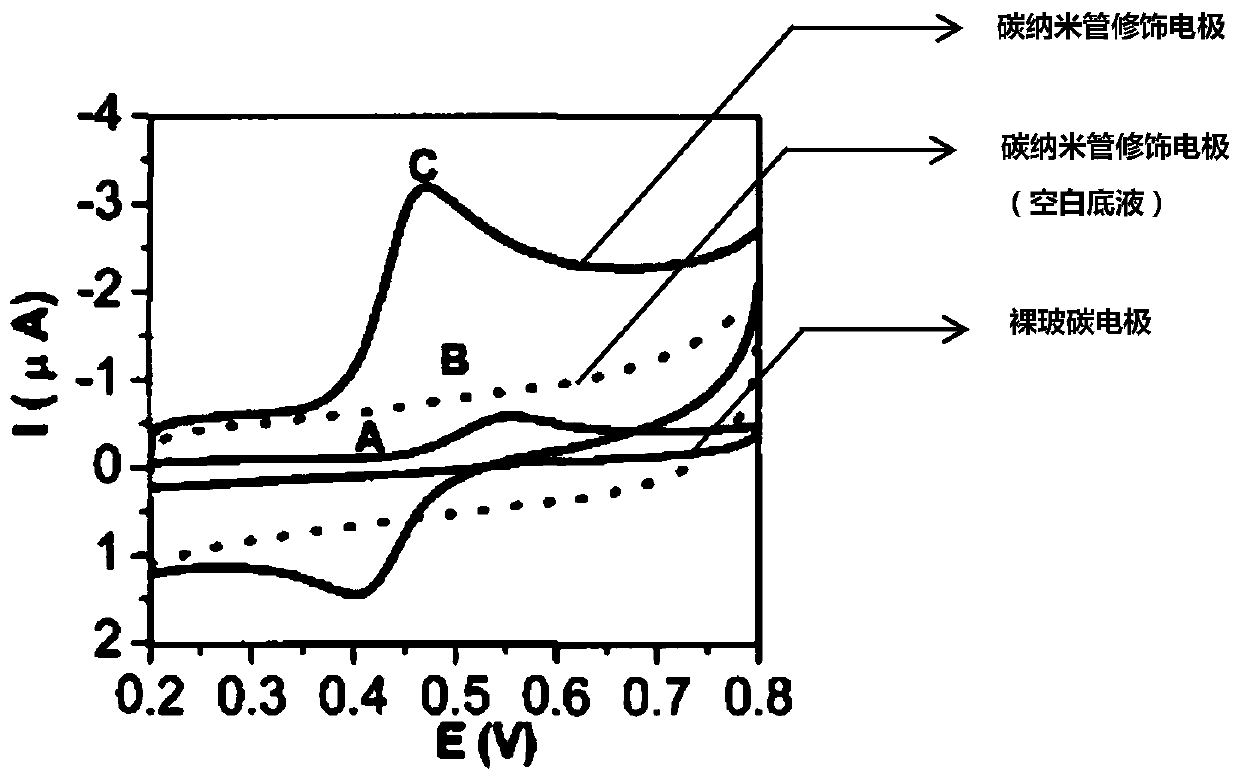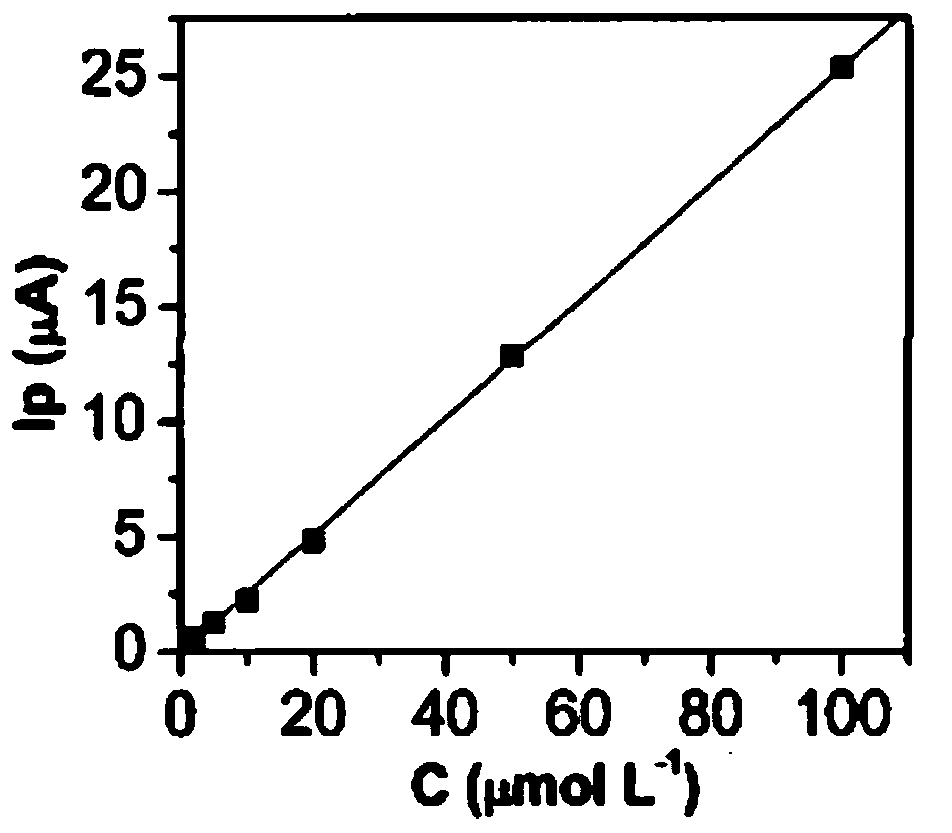Carbon nanotube modified electrode for acetaminophen detection and preparation method of carbon nanotube modified electrode
A paracetamol and carbon nanotube technology, applied in the field of electrochemical detection, can solve the problems of large overpotential, irreversible electrochemical reaction, low sensitivity, etc., and achieves low detection limit, simple and feasible preparation method, and high sensitivity. Effect
- Summary
- Abstract
- Description
- Claims
- Application Information
AI Technical Summary
Problems solved by technology
Method used
Image
Examples
Embodiment 1
[0045] This embodiment provides a glassy carbon electrode modified with carbon nanotubes. The electrode adopts a three-electrode system, the surface of the working electrode is modified with a carbon nanotube layer, the surface of the counter electrode is modified with platinum, and the surface of the reference electrode is modified with silver-silver chloride.
[0046] The preparation method of the carbon nanotube modified electrode is as follows:
[0047] (1) Disperse multi-walled carbon nanotubes in 0.5% Nafion solution to obtain 1 mg / mL carbon nanotube modifier.
[0048] (2) Polish with alumina powders of 1.0 μm, 0.3 μm, and 0.05 μm respectively, then ultrasonically treat with 1:1 nitric acid, absolute ethanol, and ultrapure water for 1 minute each, and dry naturally for later use; 4 μL of carbon nanotube modification agent was drop-coated with a micro-syringe, and dried at room temperature to prepare a carbon nanotube-modified electrode.
Embodiment 2
[0050] This embodiment provides a glassy carbon electrode modified with carbon nanotubes. The electrode adopts a three-electrode system, the surface of the working electrode is modified with a carbon nanotube layer, the surface of the counter electrode is modified with platinum, and the surface of the reference electrode is modified with silver-silver chloride.
[0051] The preparation method of the carbon nanotube modified electrode is as follows:
[0052] (3) Disperse multi-walled carbon nanotubes in 0.5% Nafion solution to obtain 1 mg / mL carbon nanotube modifier.
[0053] (4) Polish with alumina powders of 1.0 μm, 0.3 μm, and 0.05 μm respectively, then ultrasonically treat with 1:1 nitric acid, absolute ethanol, and ultrapure water for 1 minute each, and dry naturally for later use; 6 μL of carbon nanotube modification agent was drop-coated with a micro-syringe, and dried at room temperature to prepare a carbon nanotube-modified electrode.
Embodiment 3
[0055] This embodiment provides a specific detection method for the determination of acetaminophen using a carbon nanotube modified electrode, which specifically includes:
[0056] (1) The carbon nanotube modified electrode prepared in Example 1 was scanned by cyclic scanning voltammetry in 0.10mol / L HAc-NaAc bottom solution for 8 weeks to activate the electrode;
[0057] (2) Prepare 1×10 with 0.10mol / L HAc-NaAc solution -4 The mol / L acetaminophen solution was placed in an electrolytic cell, enriched with the above-mentioned carbon nanotube modified electrode at 0.2V for 45 seconds, measured by square wave sweep voltammetry, and recorded a peak current of 0.46V.
PUM
 Login to View More
Login to View More Abstract
Description
Claims
Application Information
 Login to View More
Login to View More - R&D
- Intellectual Property
- Life Sciences
- Materials
- Tech Scout
- Unparalleled Data Quality
- Higher Quality Content
- 60% Fewer Hallucinations
Browse by: Latest US Patents, China's latest patents, Technical Efficacy Thesaurus, Application Domain, Technology Topic, Popular Technical Reports.
© 2025 PatSnap. All rights reserved.Legal|Privacy policy|Modern Slavery Act Transparency Statement|Sitemap|About US| Contact US: help@patsnap.com



